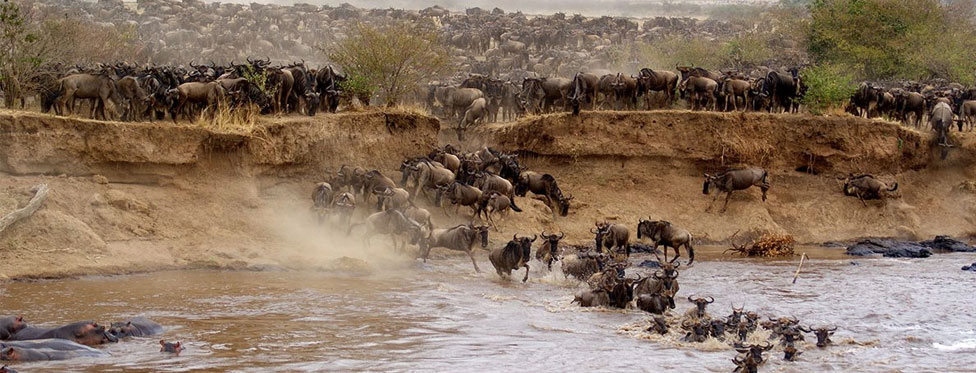Maasai Mara Conservation Efforts: Protecting Kenya's Wildlife Heritage
By JAGAT [11/June/2024] : The Maasai Mara National Reserve, located in southwestern Kenya, is renowned worldwide for its stunning landscapes, diverse wildlife, and the annual Great Migration. This natural wonder is not only a crucial part of Kenya's heritage but also an invaluable ecosystem supporting an array of species. However, increasing human activity, climate change, and poaching have posed significant threats to this precious environment. In response, various conservation efforts are being undertaken to protect and preserve the Maasai Mara for future generations.
Community-Based Conservation Initiatives
One of the cornerstones of conservation in the Maasai Mara is community involvement. The Maasai people, indigenous to the region, have historically coexisted with wildlife, practicing a lifestyle that harmonizes with nature. Modern conservation strategies have increasingly involved the Maasai community, recognizing their vital role as stewards of the land. Programs such as the Maasai Mara Wildlife Conservancies Association (MMWCA) have been pivotal, promoting land leases and revenue-sharing models that incentivize the Maasai to engage in conservation activities.
These community-based initiatives focus on sustainable land management practices that mitigate human-wildlife conflict. By involving local communities in decision-making processes and providing them with economic benefits from tourism, these programs foster a sense of ownership and responsibility towards conservation efforts. Additionally, education and awareness campaigns help instill a conservation ethic among younger generations, ensuring the continuity of these efforts.

Anti-Poaching and Law Enforcement
Poaching remains one of the most significant threats to Wildlife in Maasai Mara. To combat this, enhanced anti-poaching measures have been implemented, involving collaboration between governmental agencies, conservation organizations, and local communities. The Kenya Wildlife Service (KWS) plays a crucial role, employing rangers who conduct regular patrols and monitor wildlife movements.
Technological advancements have also been integrated into anti-poaching efforts. Drones, GPS tracking, and camera traps are used to monitor poaching activities and track endangered species. These technologies provide real-time data that enables swift responses to poaching incidents, improving the effectiveness of law enforcement.
Habitat Restoration and Management
Habitat loss due to human encroachment and climate change poses a significant threat to the Maasai Mara's biodiversity. Conservationists are actively engaged in habitat restoration projects aimed at preserving and rehabilitating critical ecosystems. These initiatives include reforestation efforts, wetland restoration, and the creation of wildlife corridors that facilitate the movement of animals across fragmented landscapes.
Sustainable tourism practices are also being promoted to minimize the environmental footprint of visitors. Eco-friendly lodges, regulated safari practices, and educational programs for tourists are some of the measures being implemented to ensure that tourism does not negatively impact the environment.
Scientific Research and Monitoring
Scientific research is fundamental to informed conservation strategies. Researchers conduct studies on wildlife behavior, population dynamics, and ecological interactions to understand the needs of different species and their habitats. This data-driven approach enables the development of targeted conservation plans that address specific threats and challenges.
Monitoring programs are crucial for assessing the effectiveness of conservation interventions. By tracking changes in wildlife populations and habitat conditions, conservationists can adapt their strategies and ensure that efforts yield positive outcomes. Collaboration with international research institutions and conservation organizations enhances the scope and impact of these initiatives.
Conclusion
The Maasai Mara is a treasure trove of biodiversity and a symbol of Kenya's natural heritage. Protecting this unique ecosystem requires a multifaceted approach that involves the collaboration of local communities, governmental bodies, conservation organizations, and international partners. Through community-based conservation, robust anti-poaching measures, habitat restoration, and scientific research, significant strides are being made to safeguard the Maasai Mara's wildlife and habitats.
The continued success of these efforts hinges on sustained commitment and adaptive strategies that address emerging threats. By prioritizing conservation, Kenya not only preserves its wildlife heritage but also ensures that future generations can experience the awe-inspiring beauty of the Maasai Mara.


